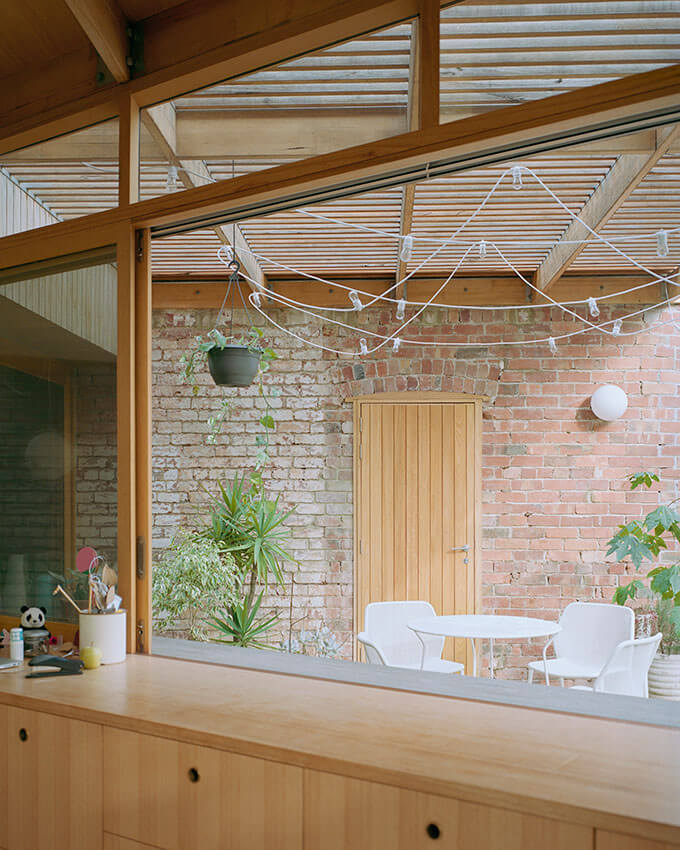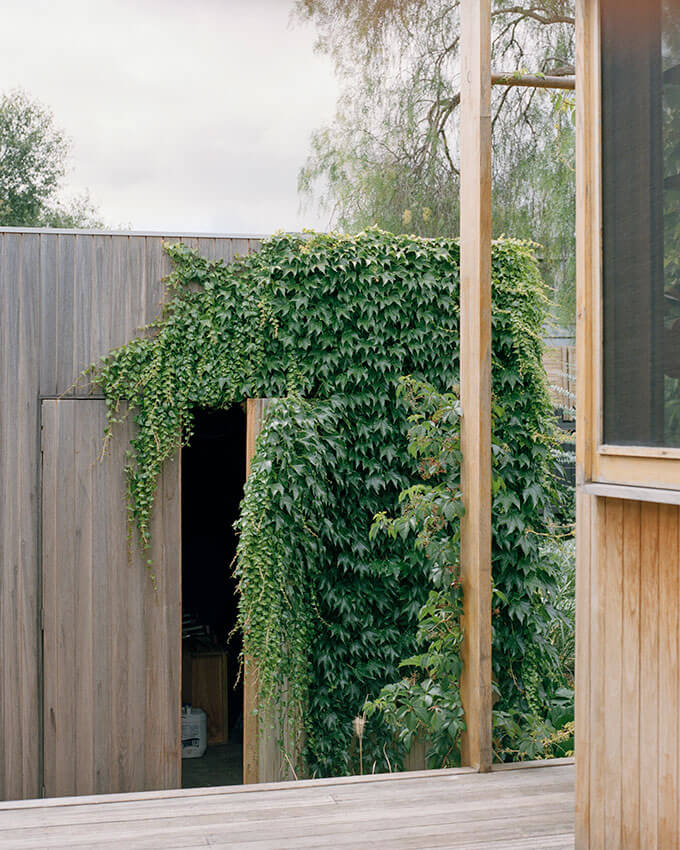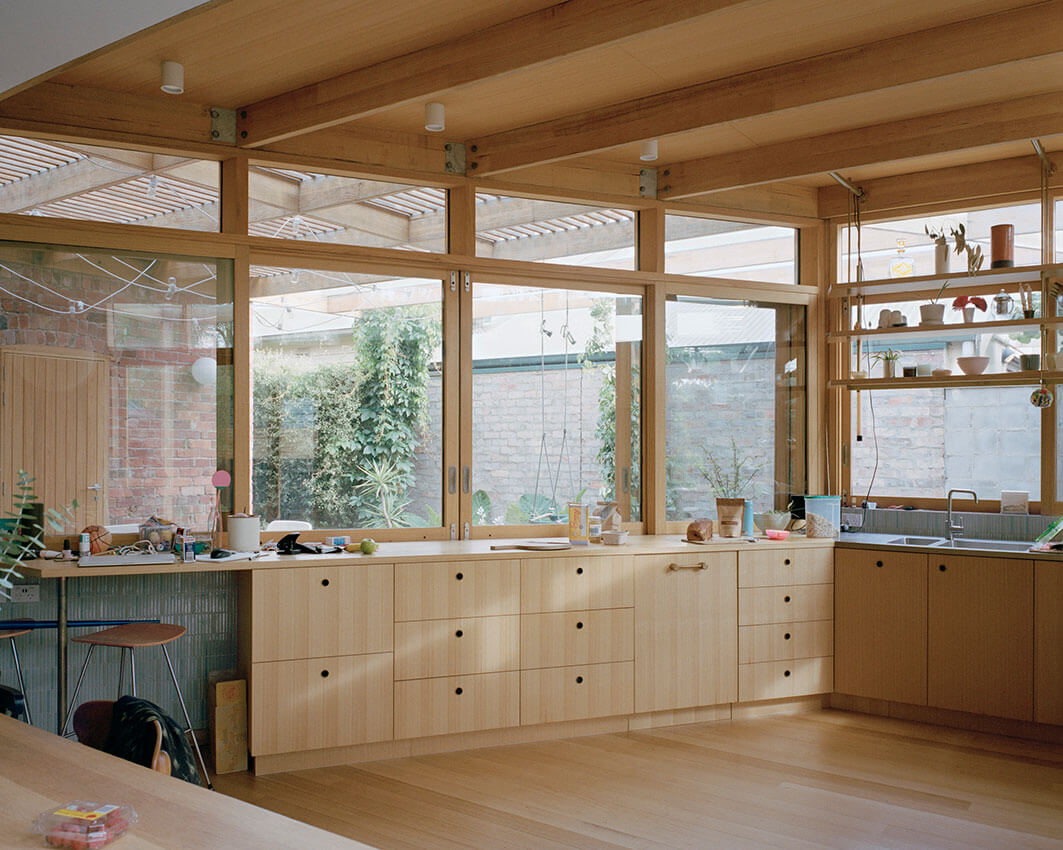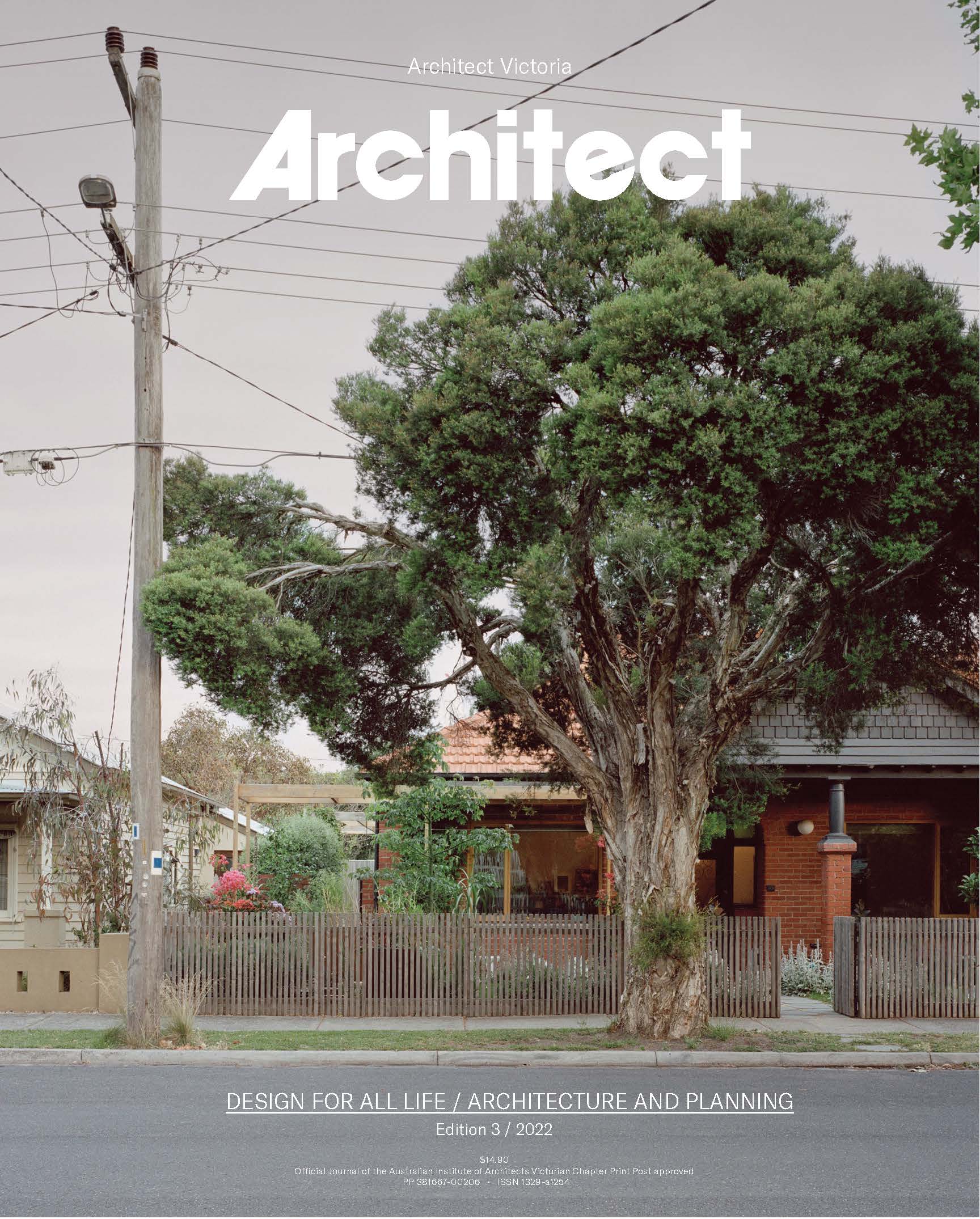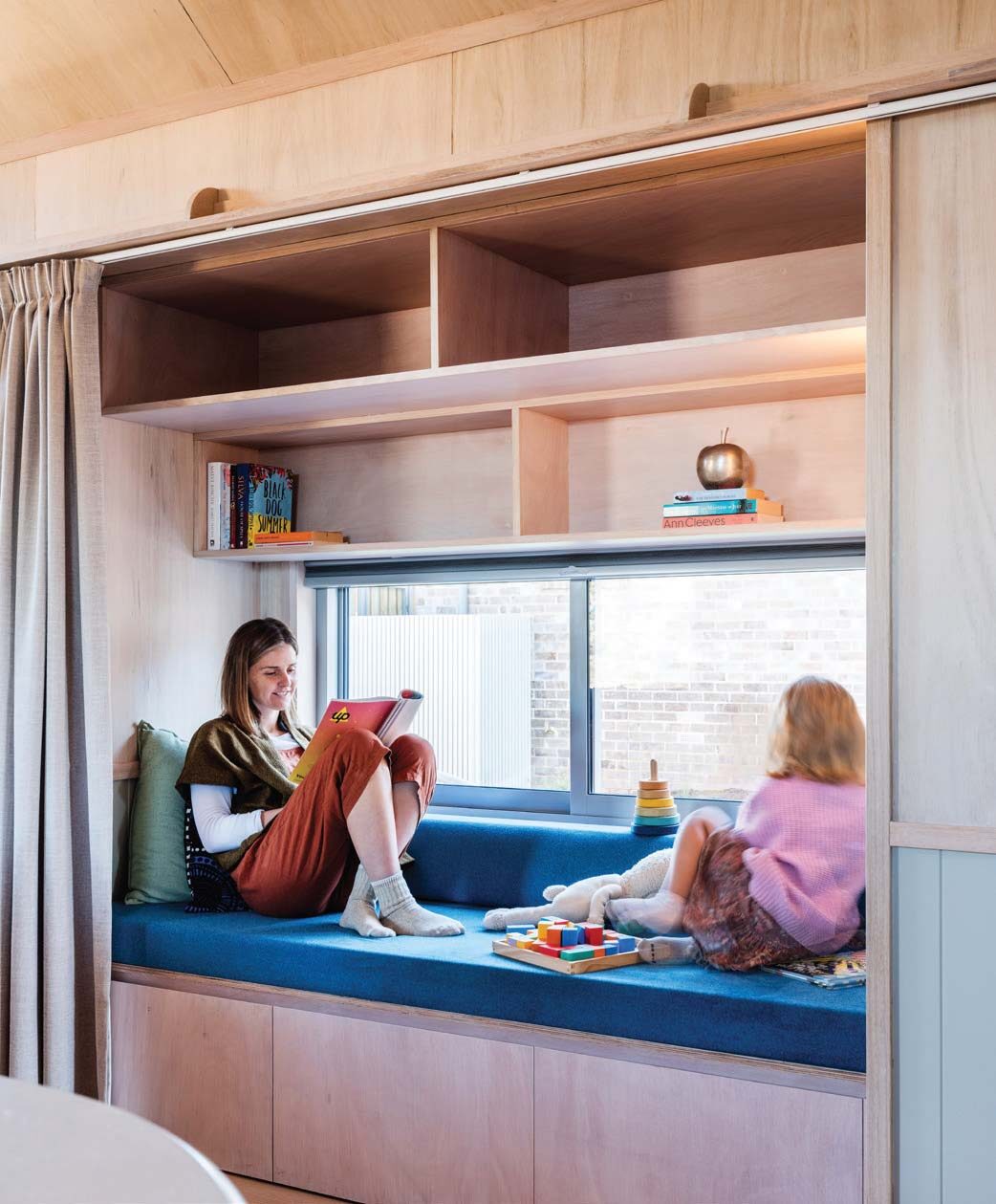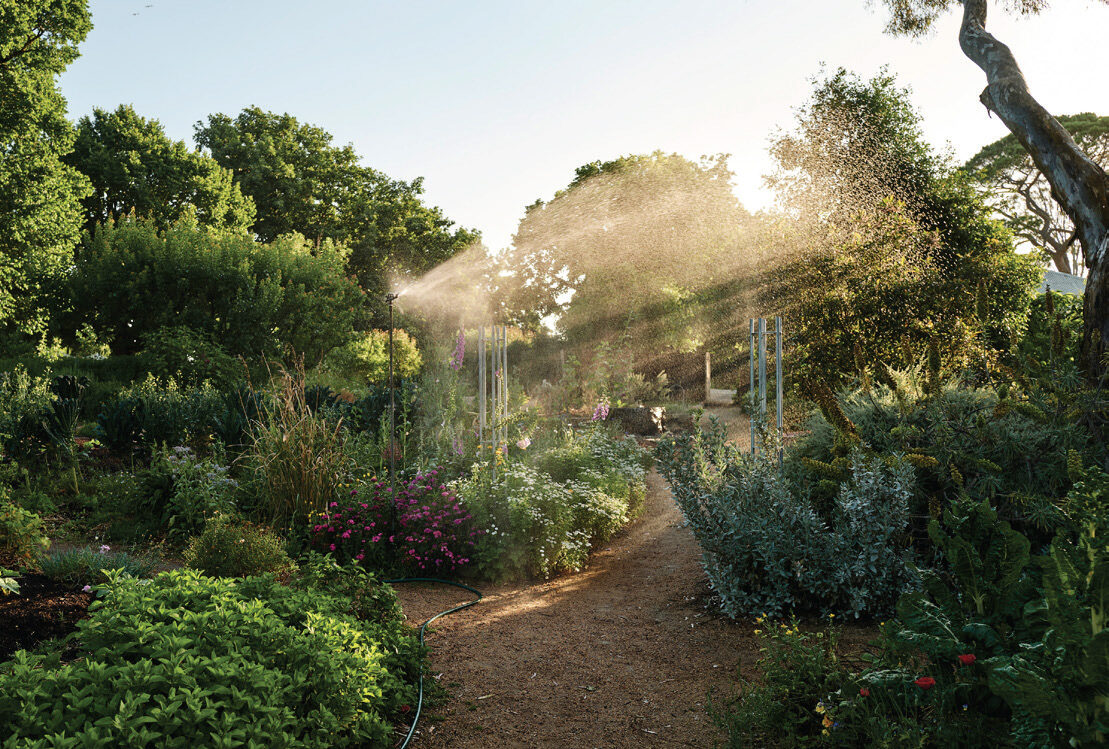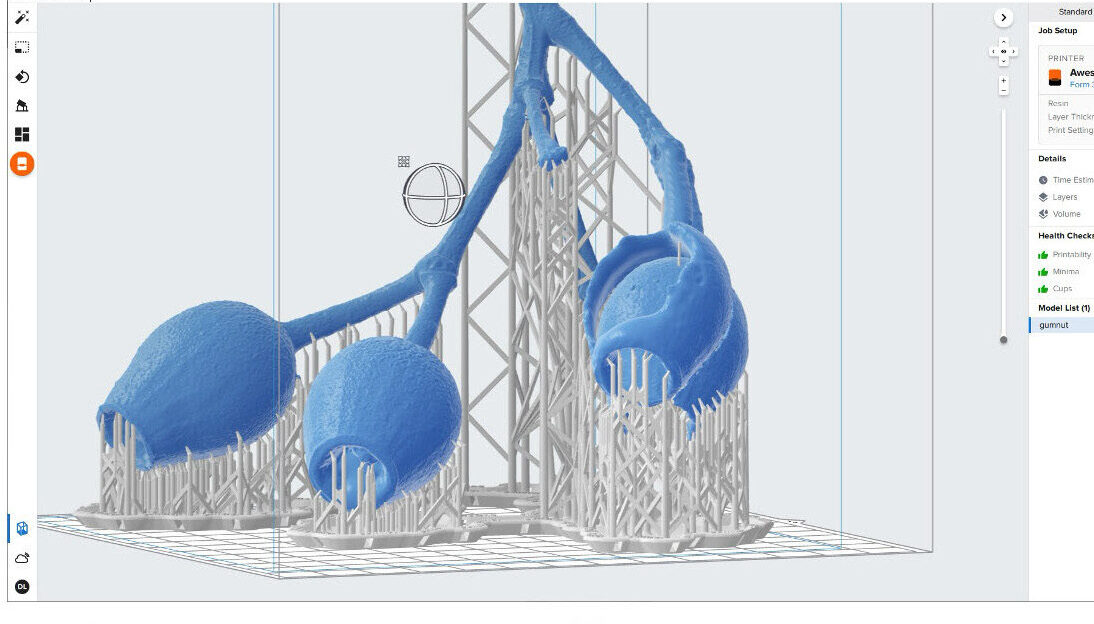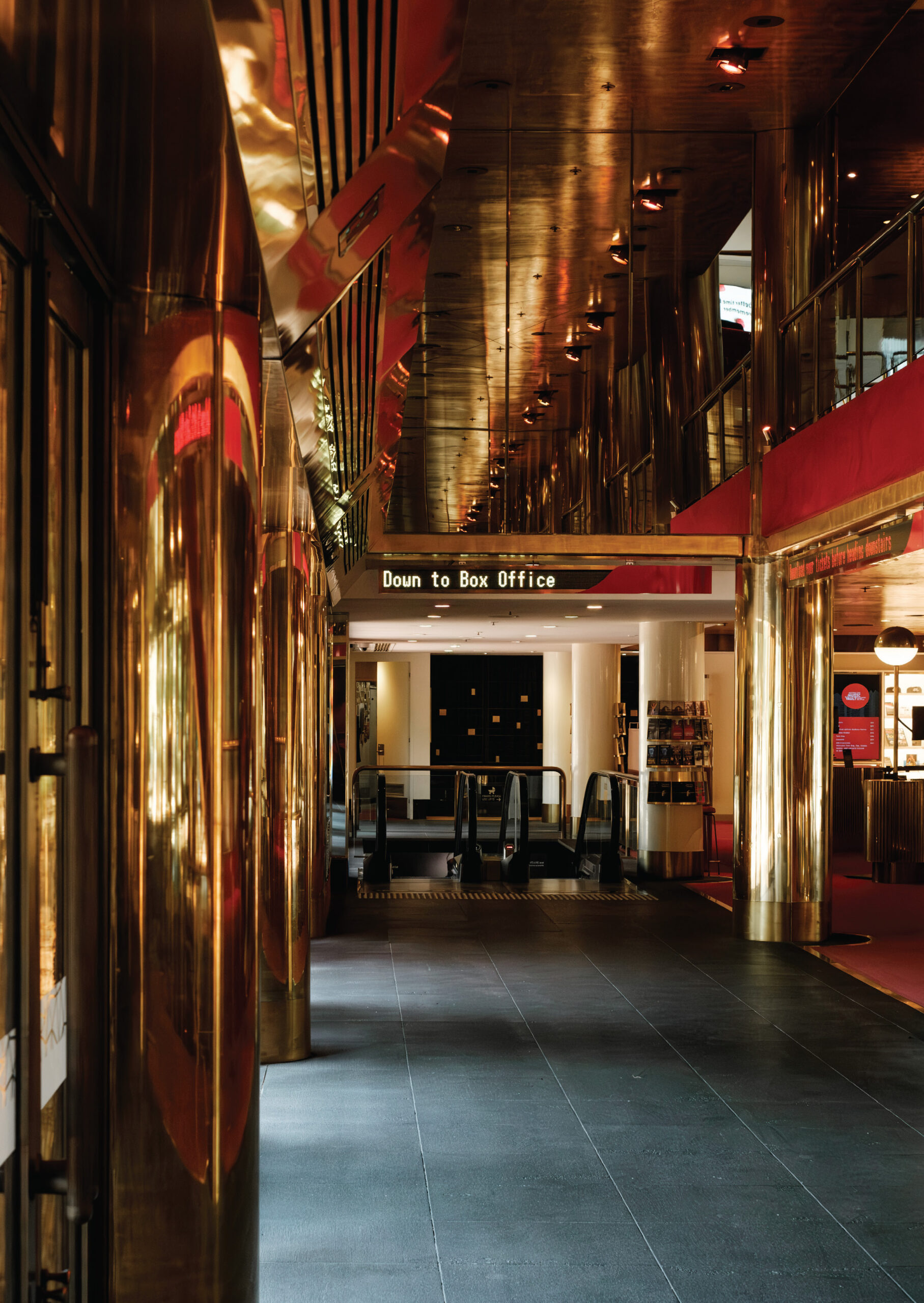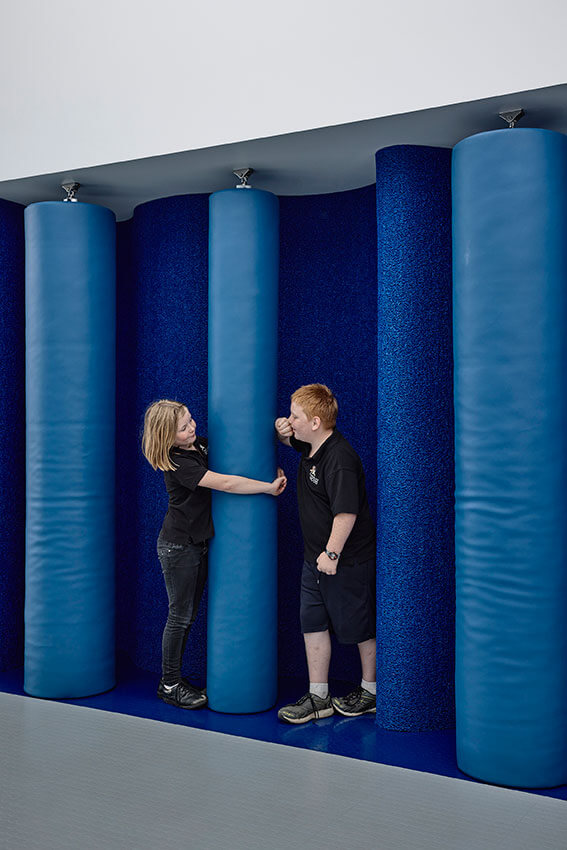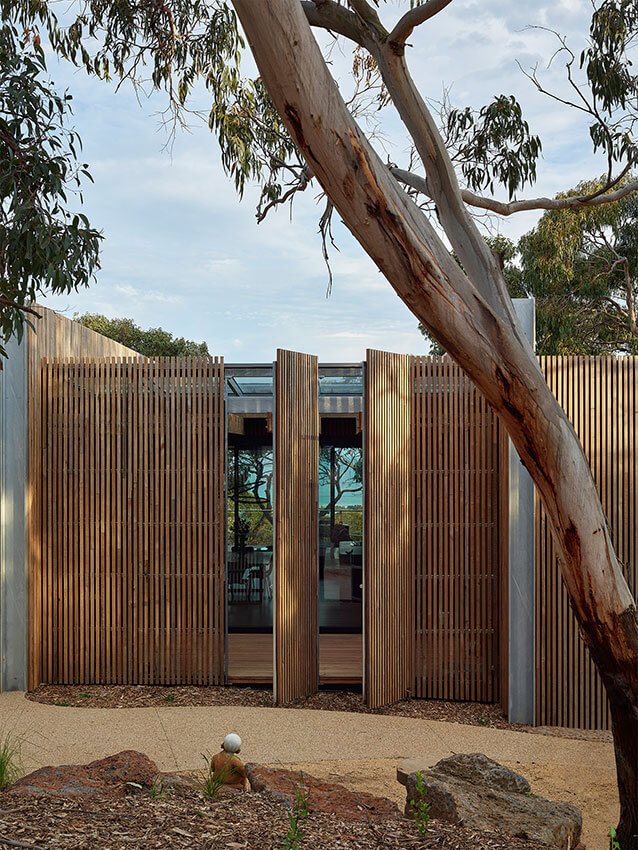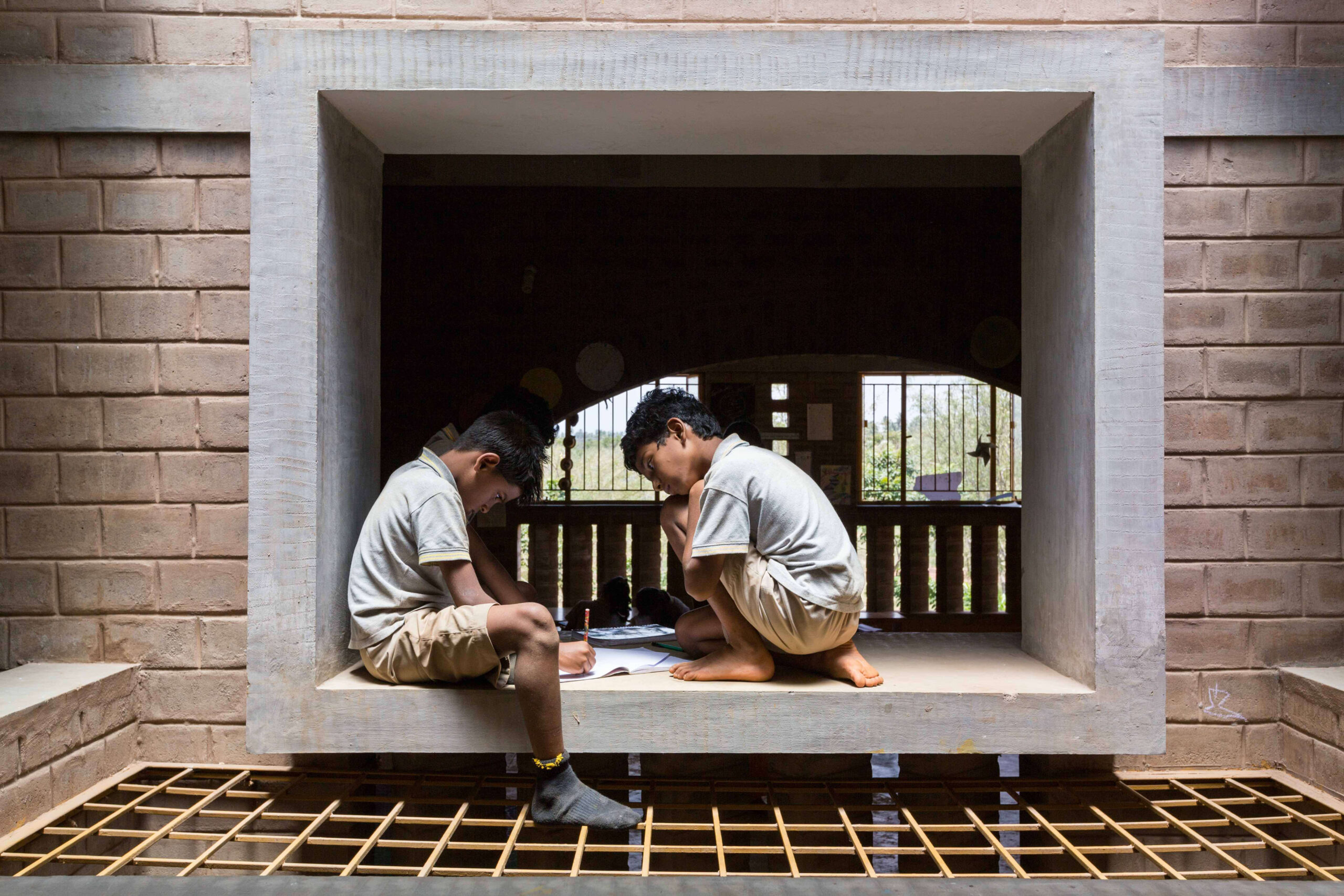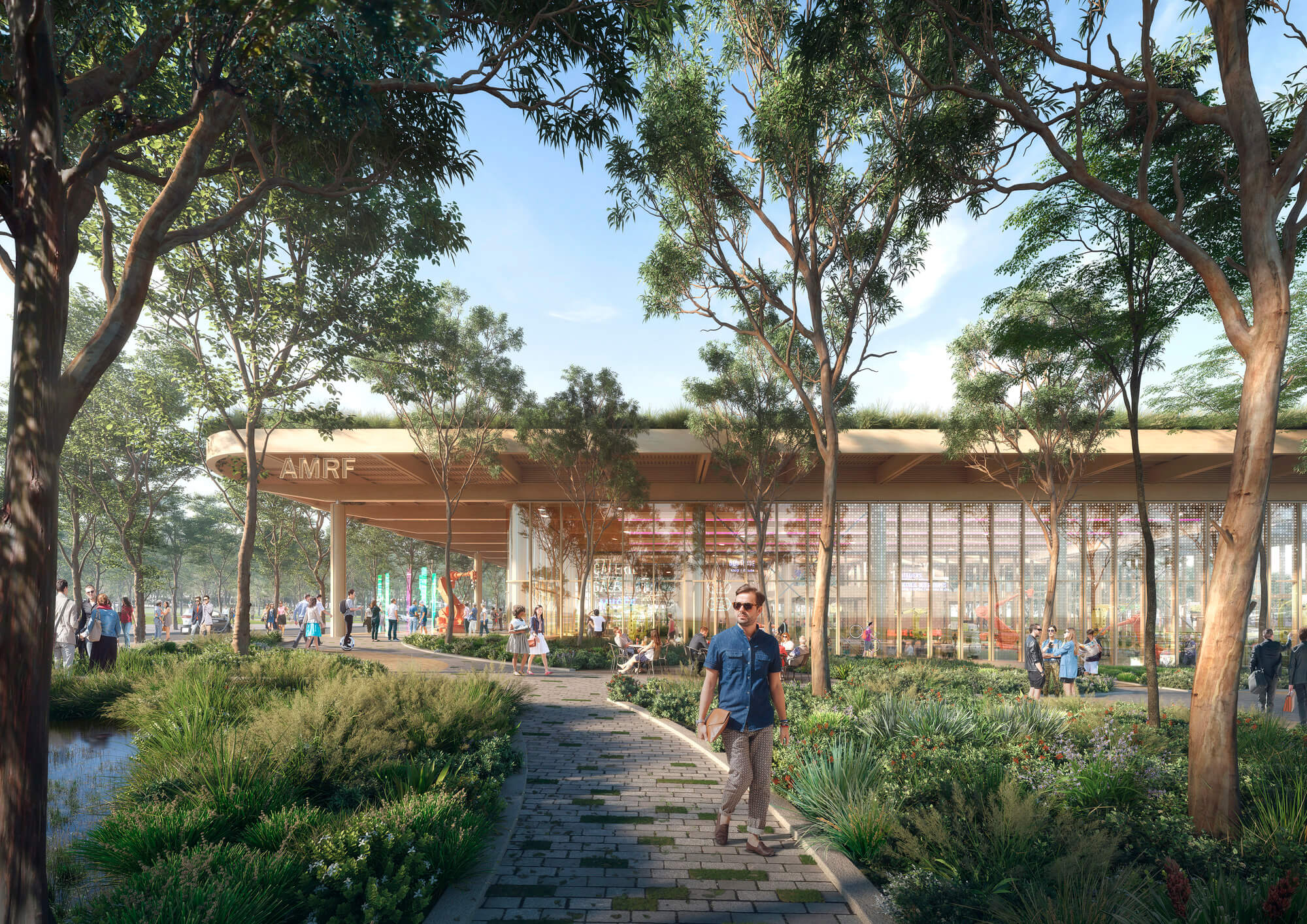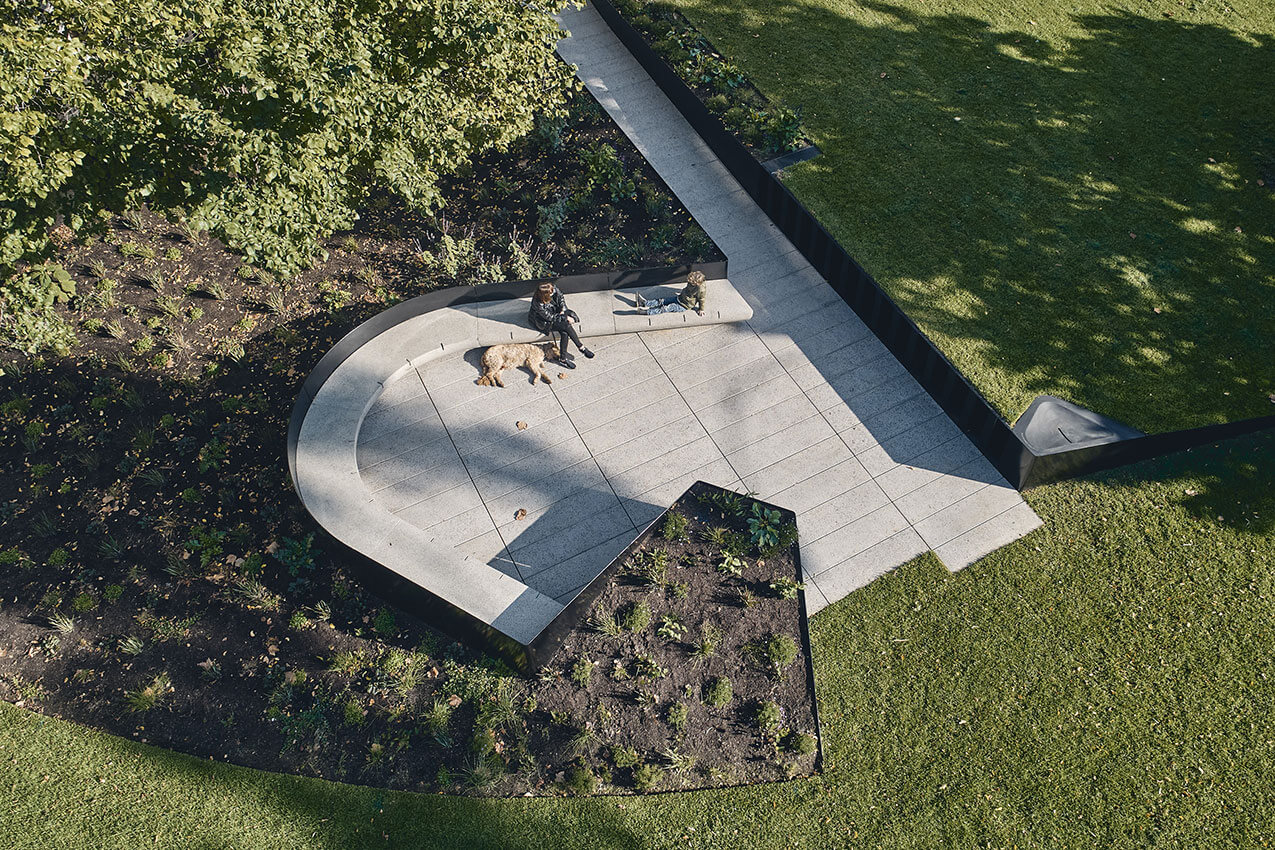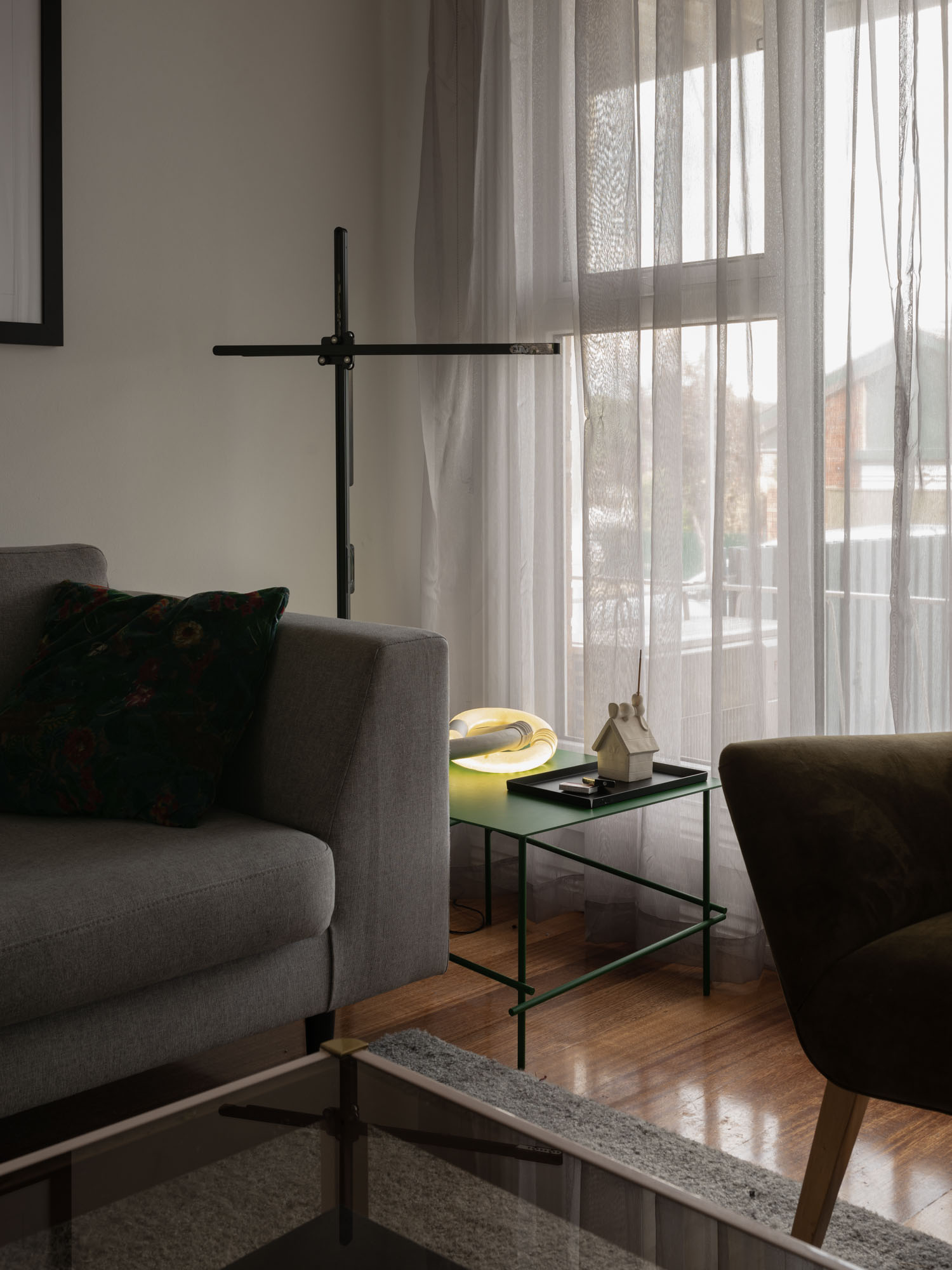Arthur: Oscar Sainsbury Architects
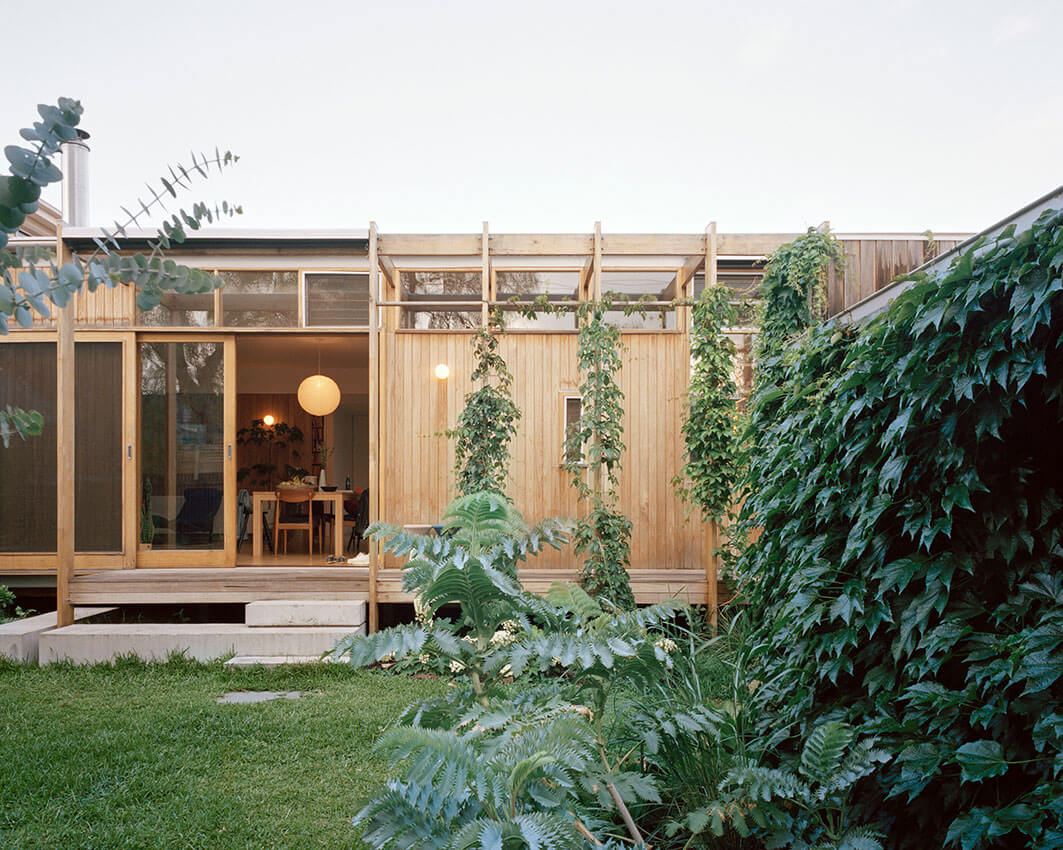
A central deck is not only Oscar Sainsbury Architects’ solution to the site’s flooding overlay, but a core part of their resulting design. Oscar’s aspirations for his family home result in a tailored renovation that leans into the use of timber and embraces passive solar ambitions.
Planted within a pocket of residential fabric in Fairfield is Arthur, Oscar Sainsbury Architects’ tactical renovation to an existing Federation home. Sitting long across its sloped block, the semi-attached brick house is opened up to embrace the nature of its site. A welcome addition places itself within the garden, sitting comfortably among two large peppercorn trees. United through a central deck, the resulting home is both a crafted response to existing controls, and an invitation for the garden to reach into the family’s daily life internally.
The addition appears to be gently resting on a series of in-situ concrete steps, almost as if it has just landed in its riverside locale. Located near the Yarra River, much of the renovation was formed around a flood overlay. When asked how they navigated this challenge, practice director, Oscar Sainsbury shared how they used a central deck as a design solution. The deck became a bridging tool, allowing the existing home and the elevated addition to share the same floor levels. While tying both areas together, this north-facing deck also gifts the home two separate pockets of outdoor spaces. Oscar saw an “opportunity for a three-sided building with excellent access to light, cross ventilation and views to the garden”. With this, the deck began to become an integral part of how the living spaces within were carved out.
“Connecting the deck and the kitchen is a long timber bench that replaces the typical internal island bench. With the windows open, meals and drinks can be enjoyed with interactions from both inside and outside.” Oscar shared how their new timber and glass living pavilions open out to the landscape beyond on all three sides, with a “large sliding door adjacent to the dining table receding completely out of sight”. In-situ concrete steps, which double as seating benches, gently guide you down from the timber deck to the garden beyond, while consolidating the natural levels of the site and the existing built forms.
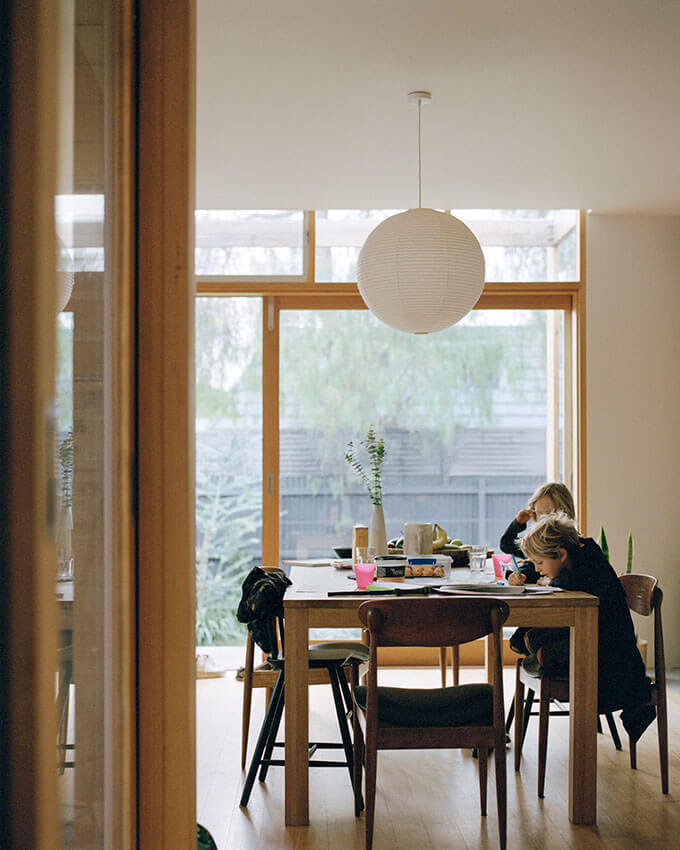
The highly distinguished material palette which is expressed across the complete home is a reflection of Oscar Sainsbury Architects’ very deliberate use of timber. Leaning into his experience working with timber, Oscar was able to deliver this project as an owner-builder. To simplify the build, the addition’s structure was primarily constructed with timber rafters and timber framing, with no steel. All structural elements were deliberately infilled with either glazing, timber cladding, or timber joinery, maintaining a restrained, yet bold material palette. Outside, we see locally sourced Silvertop ash cladding and a timber deck. The “continuity of materials inside and out reinforce the project as a series of connected internal and external spaces”.
Among a few key considerations for the home was the aspiration to design for passive solar orientation, with no requirement for mechanical cooling. Instead, Oscar looked to “encourage active user participation with ceiling fans, cross ventilation and manually operated shading systems”, to allow his family to control the climate within the home. The “elevated nature of the addition afforded a few opportunities” as well, paired with “the three-sided nature of the addition also making cross ventilation easy”. Below the raised addition, bladder tanks were installed, to allow for rainwater collection.
The careful consideration of what existed on site, and what Oscar Sainsbury Architects chose to add to it exhibits a tactical approach to shaping a family home. Restraints such as a flood overlay and the sloped nature of the site were harnessed, and ultimately, developed solutions that presented the project with a unique series of design opportunities. Carefully preserving the relevant portions of the brick Federation house, we see it open up to a generous addition that unravels gracefully down its sloped site. The central deck, while addressing the flood overlay, also crafts various outdoor spaces, and weaves together the existing and new forms. Oscar sees this as the element that “connects the occupants to the generous garden landscape of the site, and ultimately to the broader environmental context of the Yarra River.
Nikita Bhopti RAIA is a registered architecture working at Sibling Architecture. A lead curator of New Architects Melbourne, Nikita is also engaged with multiple mentoring platforms as both a mentor and mentee. She is a regular contributor to Architect Victoria and The Design Writer.
